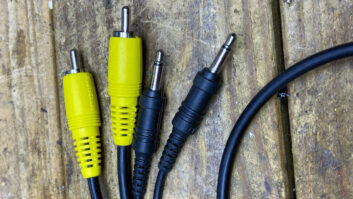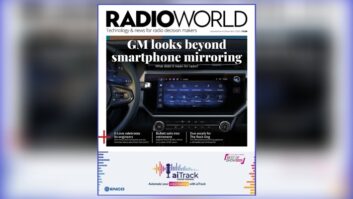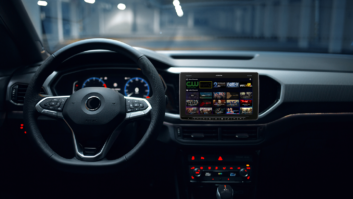
Announced but nearly unnoticed at CES 2009 was what will almost certainly be the future of peripheral-device interfacing for PCs: the third generation of the Universal Serial Bus, USB 3.0.
As the computer continues to define the center of the digital universe for consumers and businesses, and portable personal devices proliferate, the physical interface standard that allows these products to interconnect easily becomes increasingly important.
While there has been much recent buzz over wireless interconnections, spectrum needs necessarily limit those connections’ bandwidth in ways that wired interfaces need not be concerned with. So there’s still plenty to be said for old school, where wired connections (whenever practical) make quick work of ever larger file-transfer and device-sync requirements.
It’s about time
USB 3.0 is expected to begin showing up in computers and peripheral devices by about this time next year (the holiday season of 2009 is the initial release target), which — although it may be hard to believe — will make it just about a full decade after USB 2.0’s introduction. So it’s due, especially considering by that time it’s likely that 3+ GHz quad-core CPUs and terabyte hard drives also will be commonplace among PCs.
Some other contextual changes have occurred in the meanwhile, which may lead to a faster uptake for USB 3.0 than its 2.0 version experienced.
You may recall that when USB 2.0 debuted, a highly competitive battle raged with the FireWire interface. FireWire, standardized as IEEE 1394, already had provided higher maximum speeds than USB 1.0, and soon after the USB 2.0 introduction, the FireWire camp brought forth its own next-gen format, FireWire 800 (IEEE 1394b-2002).
In their respective beginnings, the two formats had not actually competed head to head, since USB was focused on lower-end requirements like mice and keyboards, and FireWire went for the higher-bandwidth items such as cameras, scanners, external storage drives and printers. Apple — the originator of the FireWire format — had designed it to replace the SCSI interface, which was an established standard used for the latter class of devices.
Keyboards and mice had used other dedicated interfaces at that time, specific to Macs or PCs, so USB 1.0 was a major change, providing significant new uniformity even though it was limited to those lower-end devices. Later, Sony also pushed the FireWire format hard, under the trade name “iLink,” mostly for digital still and video camera interfacing. (FireWire was also proposed as the basis for a secure video interface between set-top boxes and TV display screens, but for a number of political and technical reasons, this never gained traction.)
As USB 2.0 closed in on bandwidth parity with FireWire 400, however, the overlap between potential applications of the two formats expanded, and USB’s lower cost of implementation began to put strong competitive pressure on 1394. The scope and penetration of USB soon grew quickly, reaching an estimated 6 billion devices today. Although a 1394c standard has also been published recently, the decision by Apple to drop FireWire interfacing in favor of USB only on future computers speaks volumes on how this story is likely to proceed in its next chapter.
Another competing format that has emerged in the interim is eSATA (External Serial AT Attachment), which has begun to appear on some of the increasingly popular and inexpensive external hard drives. It provides the same speed for external connections as its widely used cousin, the SATA internal hard-disk bus. But unlike USB or FireWire, eSATA cannot provide power, so it has not enjoyed broader deployment in the peripheral interface market.
Given this environment, and the maximum speeds that USB 3.0 will attain (see below), USB appears poised to assert even more dominance in the wired peripheral interface space going forward.
Tech specs
USB 2.0’s theoretical maximum speed is 480 Mbps, although in many implementations it was lucky to attain half of that. FireWire’s maximum was 400 Mbps in its original release, increasing to 800 Mbps in 1394b, and now moving up to a top end of 3.2 Gbps in the proposed FireWire S3200 format (expected to also be launched later this year).
In all its forms, FireWire’s actual performance often made it closer to its theoretical maximum due to its intrinsic duplex capability (USB 1.0 and 2.0 are simplex), and its more rigid adherence to hardware and software specifications than USB (which allowed implementers greater latitude), but this came at some premium in hardware cost for 1394-equipped devices. Meanwhile, eSATA has a theoretical maximum throughput of 3 Gbps.
USB 3.0 will eclipse all competing formats with a theoretical maximum speed of 5 Gbps, and it will likely reach closer to this value in typical implementations due to its move to duplex interconnection. The latter is achieved by changing the USB cable from the two conductors used in previous versions to a six-wire format in USB 3.0. The cables therefore will appear thicker than their predecessors, but the connectors will remain similar to earlier versions, so USB 3.0 ports will maintain backward compatibility to USB 1.0 and 2.0 devices. Of course, maximum interconnection speeds will only be achieved if both devices implement USB 3.0, and a USB 3.0 cable is used.
USB 3.0 also adds advanced power management, allowing improved battery life on portable host devices, and generally “greener” operation through reduced power consumption in the devices that supply or receive power across its connections.
Radio applications
Probably the most valuable impact of USB 3.0 for radio broadcasters will be the faster uploading of field recordings (of both audio and visual content) from portable devices to editing and production environments. This implies that higher-quality capture will not necessarily increase broadcasters’ cost or time.
Consider that today many devices record to removable media (e.g., Compact Flash or SD cards), which can then be ejected from the field recorder and plugged directly into a PC slot. However, this requires a large number of these cards to be retained by the broadcaster, and they are expensive. They can also be misplaced or damaged easily, and they generally add some cost per unit of storage to the products that use them (compared to non-removable RAM-based devices). The proliferation of removable media formats also creates additional complexity and confusion, and limits broadcasters’ choice of devices to those that support a favored storage format.
Note also that radio operations are not just bringing back audio from the field anymore, but capturing still images and video, as well, for distribution on their Web sites or other future multimedia delivery systems.
Thus while most consumers will enjoy super-fast syncing of their personal media players, cameras and phones to their PCs from USB 3.0, broadcasters can use the format to save time and money, while increasing the quality and quantity of material gathered from the outside world for presentation to their audiences. Faster interface to external storage devices will also help maintain libraries and backups in radio production environments.
So look for USB 3.0 — coming to a PC and peripheral near you soon.
Skip Pizzi is contributing editor of Radio World.







